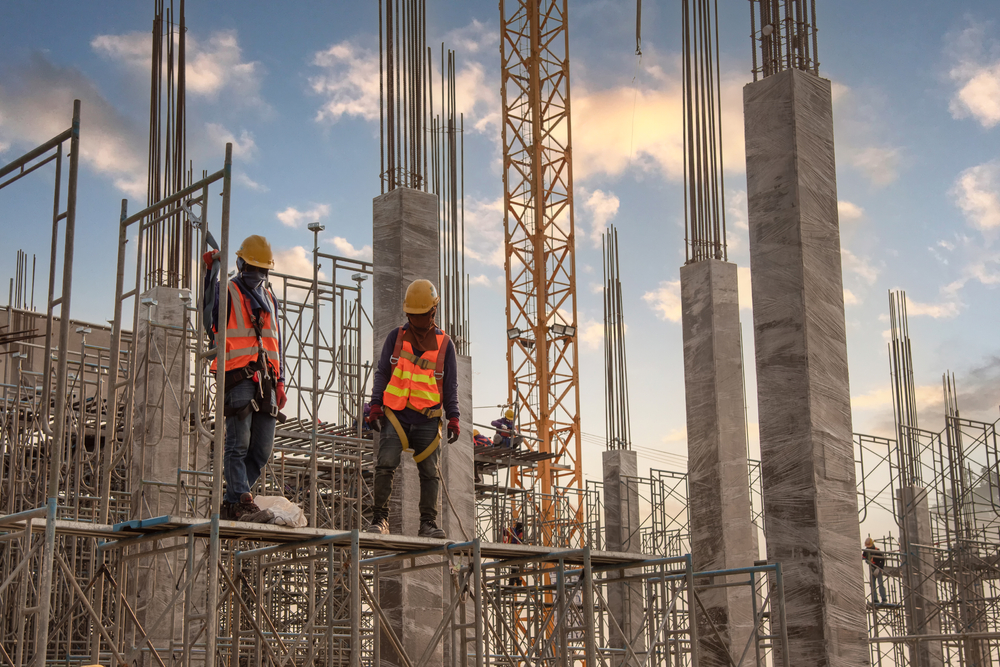
Carbon Footprint Reduction in Construction: Building a Sustainable Future
Carbon Footprint Reduction in Construction: Building a Sustainable Future
Carbon footprint reduction in construction has become a top priority as climate change, resource depletion, and urban expansion reshape the way buildings are planned and executed. The construction industry is responsible for a significant share of global carbon emissions—both operational and embodied. Therefore, carbon footprint reduction in construction is essential for creating sustainable, resilient, and environmentally responsible built environments. This blog explores key strategies, materials, and technologies that support carbon footprint reduction in construction, especially in the context of India’s growing infrastructure needs.
Why Carbon Footprint Reduction in Construction Matters
Carbon footprint reduction in construction is more than just an environmental trend—it’s a necessity. Buildings consume large amounts of energy and raw materials. Traditional construction methods contribute to greenhouse gases through cement production, steel manufacturing, transportation, and heavy machinery use.
With increasing climate awareness, India is focusing on carbon footprint reduction in construction through green policies, sustainable materials, and advanced design techniques. Reducing emissions not only benefits the planet but also lowers long-term operating costs and improves building performance.
If you’re planning a project and want expert guidance on carbon footprint reduction in construction, feel free to contact us
Key Strategies for Carbon Footprint Reduction in Construction
1. Using Low-Carbon and Recycled Materials
Choosing the right materials plays a major role in carbon footprint in construction. Low-carbon concrete, fly ash bricks, bamboo, recycled steel, and reclaimed wood significantly reduce embodied carbon. These materials lower emissions during production and support circular economy practices.
2. Sustainable Design and Architecture
Passive design techniques—such as proper building orientation, natural ventilation, daylighting, and shading—help reduce energy needs. Sustainable architectural planning ensures that carbon footprint in construction is achieved from the design stage itself.
3. Renewable Energy Integration
Solar panels, solar thermal systems, and small-scale wind turbines lower dependence on fossil fuels. Renewable systems support carbon footprint in construction by providing clean energy.
For more information on renewable energy adoption in India, visit the MNRE (Ministry of New and Renewable Energy):
4. Energy-Efficient Equipment and Technology
Smart lighting, LED fixtures, high-efficiency HVAC systems, and energy-monitoring tools help cut electricity use. When combined with automation, these technologies strengthen carbon footprint in construction and building operations.
5. Efficient Waste Management
Construction waste contributes heavily to carbon emissions. Recycling concrete, repurposing metal, reusing formwork, and reducing debris help minimize environmental impact. Waste-focused planning is a critical part of carbon footprint in construction.
How Carbon Footprint Reduction in Construction Benefits the Industry
Lower Costs Over Time
While sustainable technologies may require initial investment, they drastically cut operating costs in the long run. Energy savings, efficient materials, and low-maintenance systems make carbon footprint in construction economically smart.
Improved Building Performance
Energy-efficient buildings stay cooler, consume less power, and maintain better indoor air quality. This enhances occupant comfort and health.
Better Environmental Impact
Carbon footprint in construction helps reduce pollution, conserve natural resources, and slow climate change.
Green Certifications and Recognition
Projects that prioritize carbon footprint in construction are more likely to achieve GRIHA, IGBC, or LEED certification—boosting their market value and credibility.

Challenges in Achieving Carbon Footprint Reduction in Construction
Despite widespread awareness, several challenges continue to affect progress:
-
Limited availability of certified low-carbon materials
-
Higher upfront cost for renewable energy systems
-
Lack of trained professionals familiar with sustainable practices
-
Inconsistent recycling infrastructure
However, rapid urban development and government initiatives are accelerating the adoption of carbon footprint in construction across India.
The Future of Carbon Footprint Reduction in Construction
India aims to achieve net-zero emissions by 2070, making sustainable construction crucial. Innovations like carbon-capturing concrete, AI-driven energy monitoring, modular building systems, and 3D-printed eco-materials are expected to play a major role. As sustainable solutions become more affordable, carbon footprint in construction will become standard industry practice.
Conclusion
Carbon footprint in construction is essential for creating a greener and more resilient future. By adopting low-carbon materials, smart technologies, energy-efficient designs, and renewable energy systems, the construction industry can dramatically reduce emissions and build responsibly. Whether you’re constructing a home, office, or commercial property, integrating these solutions ensures long-term sustainability.
For expert guidance on carbon footprint in construction, connect with us anytime.








